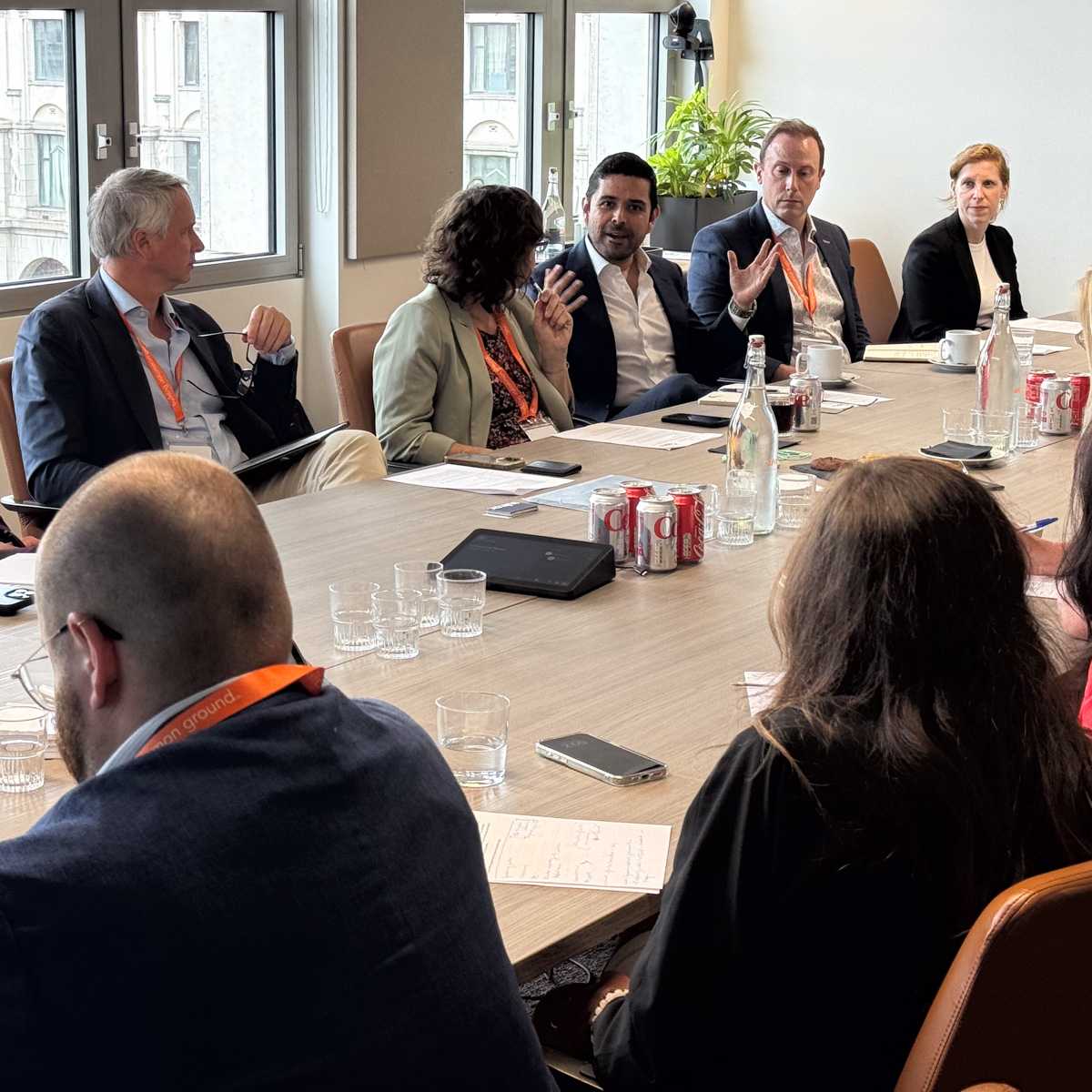

The trend for employees returning to work in the office are still a bit slow. According to PEW, among those who have a workplace outside of their home, 61% now say they are choosing not to go into their workplace. However, we are seeing significant interest in returning to offsite retreats and conference style learning programs. Learning and development teams across industries and markets are working to design programs for a post-pandemic workforce with varying vaccination statuses. There are several details to consider that didn’t exist before 2020 including COVID-19 protocol, hybrid formats and navigating the constantly changing travel restrictions.
A true hybrid event should be inclusive to individuals attending in-person and virtually. Learning professionals aim to avoid promising a hybrid conference to employees when they don’t have the resources or capability to provide an inclusive experience. When supporting one of APCO’s clients with a hybrid team retreat in April, the size of the group made these accommodations manageable. With about 20 participants joining in-person and two joining via Zoom, we were able to ensure all participants could be included in group discussions. When the full team went into smaller trust building breakout sessions, we had an in-person volunteer in each group set up a separate Zoom call with the person joining virtually. Having the laptop close to the group ensured the virtual participant could hear the discussion clearly and chime in easily.
Later in that same retreat, we ran an exercise where team members replied to strategy prompts by writing on Post-it Notes that went up around the room. The virtual participants were instructed to put their replies in the chat, and then one of the planning team members stood by and copied those replies onto Post-it’s to hang with the others.
The small number of overall participants, as well as the having so few on video, made it easy for the planning team and facilitators to manage. Trying to replicate this same approach with 130 people in the room and 40 joining virtually could create more challenges in coordinating and maintaining inclusivity.
When you have a much larger number of attendees the hybrid experience may look a little different. I was supporting a client in June on a much larger retreat that included over 120 participants and close to 50 joining virtually. Aiming to make sure everyone had the same experience, we broadcasted some of the sessions to the speaker in the room to those joining virtually. However, for the speed networking session, we had to adjust our approach to create two experiences that felt inclusive to those joining in-person and virtually. Those in-person participated in a common exercise of meeting and greeting others in the room for about five minutes before going to the next person. Trying to integrate virtual participants into something like that could have been a logistical nightmare and would have been difficult for virtual attendees to hear their in-person counterparts. Our equitable solution included identifying a planning team member facilitating a similar fully virtual experience for those on video. With the use of breakout rooms, participants were able to meet with new colleagues and reap the benefits of a networking session.
Sometimes Hybrid is Not the Answer
There will be some occasions where a hybrid live event is not the best solution. Every year I lead APCO’s Global Key Client Leader Summit. Starting in 2018 and 2019, this conference style learning program runs for 2.5 days for approximately 65 of APCO’s top global client leaders. In 2021 we held a two fully virtual summits to accommodate time zones. In 2022, we knew that we would be coming back in-person and there was much debate about making the event hybrid. Ultimately, I decided not to make it hybrid for various reasons.
Many participants that could not attend in-person were from time zones that were over seven hours in difference from the live time zone. Meaning, a session delivered any time after 10 a.m. would outside the virtual attendees typical working hours, which is not the most conducive to learning and was not an acceptable expectation if we are to value one’s work life balance.It would not have been fair to those joining virtually to not have support from someone in-person to ensure they were able to be included in the discussions or to adjust sound or video if there were technical issues with the stream.
Instead, our video team went all in on high-quality recordings of the sessions delivered by the Monday following the event to anyone who was unable to attend. This inclusive strategy serves a hybrid workforce, in a way that caters the experience to the audience.
Finally, the reliance on high-quality technology to deliver an inclusive hybrid strategy should not be understated. One of the most critical relationships a learning or event professional has in the lead up to a hybrid program is one with either the venue’s AV team or in-house IT team. All attendees, both remote and in-person, must be able to hear and see the program, and be able to participate. A detailed review of the technology necessary is critical for success. I recommend sharing your agenda with the AV team at least 2-3 weeks in advance and talking through your plans for attendees engaging virtually. This gives your AV team plenty of time to secure the proper equipment to create a seamless experience for all attendees.
It is critical that leaders take many factors into consideration before promising a hybrid experience to avoid overpromising and underdelivering. When the events are on the smaller side, small tweaks can be made to accommodate remote attendees and make them feel included. Larger events will need to approach the agenda differently, looking for ways to tailor the experience for remote attendees. Ultimately, learning professionals must continue to build their knowledge of event technology and emphasize inclusion when building dynamic learning programs for the hybrid workforce.


